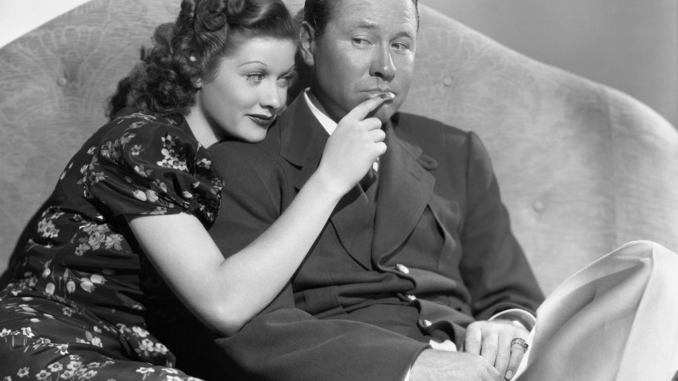
Lucille Desiree Ball
Born: Aug. 6, 1911 in Celeron, N.Y.
Died: April 26, 1989 in Los Angeles
Best known for: CBS comedy series “I Love Lucy” (
1951-1957), “The Lucy Show” (1962-68), “Here’s Lucy” (1968-74). As Variety‘s Tom Gilbert observed after her death, “Ball’s elastic facial expressions and precise comic timing catapulted her into an American institution.”
Autobiography: “Love, Lucy,” published posthumously in 1996, from a memoir Ball wrote in the mid-1960s.
Awards: Emmy wins for lead comedy actress in 1953, 1956, 1967 and 1968. Hollywood Foreign Press Assn.‘s Cecil B. DeMille Award, 1979. Academy of Television Arts & Sciences’ Governors Award, 1989
Behind the scenes impact: With her husband and “I Love Lucy” co-star Desi Arnaz, Ball was a TV pioneer who etched an enduring template for TV sitcoms shot on film, which ignited the syndication marketplace for TV. Known for her signature flame-red hair color, Ball was also the first woman to head a major TV studio, Desilu Productions, which she and Arnaz formed to produce “I Love Lucy.” The pair built Desilu into a powerhouse TV studio that produced or provided production services for such 1950s and ‘60s TV series as “Star Trek,” “Mission: Impossible,” “The Untouchables” “Our Miss Brooks,” “Make Room For Daddy,” “December Bride” and “Whirlybirds.” Ball took over the company a few years after she and Arnaz were divorced in 1960. In 1967, Ball sold Desilu for $17 million to Gulf + Western, which bought Paramount Pictures around the same time.
Why she matt
First appearance as a redhead: 1938’s “The Affairs of Annabel.” Before that she’d been a brunette and a blonde.
Last public appearance: Ball appeared as a presenter with Bob Hope on the 61st annual Academy Awards telecast held March 29, 1989, less than a month before she died. She received a rousing standing ovation that left her “noticeably overwhelmed,” as Variety observed.
Deep dive: Lucille Ball is the definition of a TV icon — so much so that she was formally christened “the first lady of television” at an Academy of Television Arts & Sciences event in 1969.
Ball famously conceived the notion of starring in a TV comedy with Arnaz as a means to stabilize their marriage at a time when her husband was often on the road touring with his band. She had been starring in a radio show for CBS, “My Favorite Husband,” that was so popular CBS decided to adapt it for the fledgling medium of television. At every step, Ball and Arnaz made “I Love Lucy” on their own terms — starting with writing the $5,000 check to finance the production of the pilot. The start of the series was heralded by Desilu with an ad in the Sept. 5, 1951, edition of Daily Variety.
ered: Ball fought the systemic racism of her era when CBS executives balked at having her star in a TV series with her real-life husband, the Cuba-born bandleader. The executives thought America would never accept a show revolving around a multi-ethnic marriage. Ball and Arnaz proved them wrong by touring the country in 1950 with a cabaret comedy act that was a smash hit. By spring 1951, Ball and Arnaz had deals with CBS and sponsor Philip Morris for the series that became “I Love Lucy.”
Her big break: Ball studied acting in New York and moved to the West Coast in the early 1930s. As a leggy ingenue, she landed numerous uncredited roles including one as a Goldwyn Girl in 1933’s “Roman Scandals.” She bounced around in bit parts at Columbia Pictures and 20th Century Fox before securing a seven-year contract at RKO in 1935 (Daily Variety noted that Ball was one of four “girls” to land deals with RKO). She was a player in mostly mediocre comedies during her time at the studio — with notable exceptions such as 1937’s “Stage Door.” She met Arnaz when the two were cast in 1940’s “Too Many Girls.” The pair tied the knot in Greenwich, Conn., on Nov. 30, 1940.
CBS and Philip Morris expected the show to air live from New York, as was the standard for most other TV comedies in that day. Ball and Arnaz didn’t want to move away from the West Coast, where they lived on a spacious five-acre ranch in the L.A. suburb of Chatsworth that was also dubbed “Desilu.” Arnaz came up with the idea of shooting the show on film. CBS and Philip Morris told the couple they would have to take a pay cut to help offset the additional expense. In exchange, Desilu got full ownership of the episodes after their initial airing.
